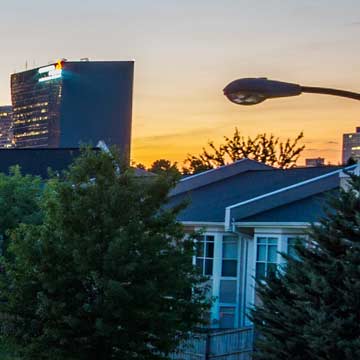Supreme Court term amid starts in shadow of Kavanaugh
Headline Legal News
It's the storm before the calm at the Supreme Court. Americans watched Thursday's high court nomination hearing of Judge Brett Kavanaugh with rapt attention. The televised spectacle was filled with disturbing allegations of sexual assault and Kavanaugh's angry, emotional denial.
On Monday, the court will begin its new term with the crack of the marshal's gavel and not a camera in sight. The term's start has been completely overshadowed by the tumult over Kavanaugh's nomination.
Republicans had hoped to have Kavanaugh confirmed in time for the court's first public meeting since late June, an addition that would cement conservative control of the court.
Instead, there are only eight justices on the bench for the second time in three terms, with a breakdown of four conservatives and four liberals. The court was down a member in October 2016, too, following the death of Justice Antonin Scalia. Justice Neil Gorsuch joined the court in April 2017, after all but about a dozen cases had been argued
It's unclear how long the vacancy created by Justice Anthony Kennedy's retirement in July will last. Consideration of Kavanaugh's nomination by the Senate has been delayed while the FBI undertakes an investigation of Christine Blasey Ford's allegation that Kavanaugh sexually assaulted her in 1982.
An empty seat on the bench often forces a push for compromise and leads to a less exciting caseload, mainly to avoid 4-4 splits between conservatives and liberals.
The cases the court has agreed to hear so far this term look nothing like the stream of high-profile disputes over President Donald Trump's travel ban, partisan redistricting, union fees and a clash over religious objections to same-sex marriage that the court heard last term.
Related listings
-
Missouri court gives jolt of life to long Midwest power line
Headline Legal News 07/18/2018A proposal for a high-voltage power line carrying wind energy across the Midwest received a jolt of new life Tuesday as the Missouri Supreme Court ruled that state regulators had wrongly rejected it.The ruling is a major victory in the quest by Clean...
-
Supreme Court adopts new rules for cell phone tracking
Headline Legal News 07/02/2018The Supreme Court says police generally need a search warrant if they want to track criminal suspects’ movements by collecting information about where they’ve used their cellphones. The justices’ 5-4 decision Friday is a victory for...
-
Supreme Court won't get involved in Wrigley Field dispute
Headline Legal News 06/16/2018The Supreme Court is leaving in place a court decision dismissing a lawsuit filed against the Chicago Cubs by the owners of rooftop clubs adjacent to Wrigley Field.Skybox on Sheffield and Lakeview Baseball Club sued the Cubs in 2015, arguing in part ...

USCIS Will Begin Accepting CW-1 Petitions for Fiscal Year 2019
On April 2, 2018, U.S. Citizenship and Immigration Services (USCIS) will begin accepting petitions under the Commonwealth of the Northern Mariana Islands (CNMI)-Only Transitional Worker (CW-1) program subject to the fiscal year (FY) 2019 cap. Employers in the CNMI use the CW-1 program to employ foreign workers who are ineligible for other nonimmigrant worker categories. The cap for CW-1 visas for FY 2019 is 4,999.
For the FY 2019 cap, USCIS encourages employers to file a petition for a CW-1 nonimmigrant worker up to six months in advance of the proposed start date of employment and as early as possible within that timeframe. USCIS will reject a petition if it is filed more than six months in advance. An extension petition may request a start date of Oct. 1, 2018, even if that worker’s current status will not expire by that date.
Since USCIS expects to receive more petitions than the number of CW-1 visas available for FY 2019, USCIS may conduct a lottery to randomly select petitions and associated beneficiaries so that the cap is not exceeded. The lottery would give employers the fairest opportunity to request workers, particularly with the possibility of mail delays from the CNMI.
USCIS will count the total number of beneficiaries in the petitions received after 10 business days to determine if a lottery is needed. If the cap is met after those initial 10 days, a lottery may still need to be conducted with only the petitions received on the last day before the cap was met. USCIS will announce when the cap is met and whether a lottery has been conducted.




